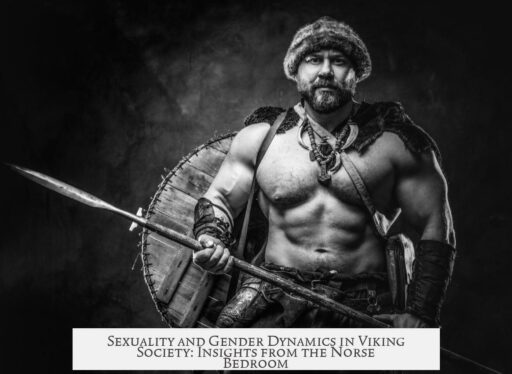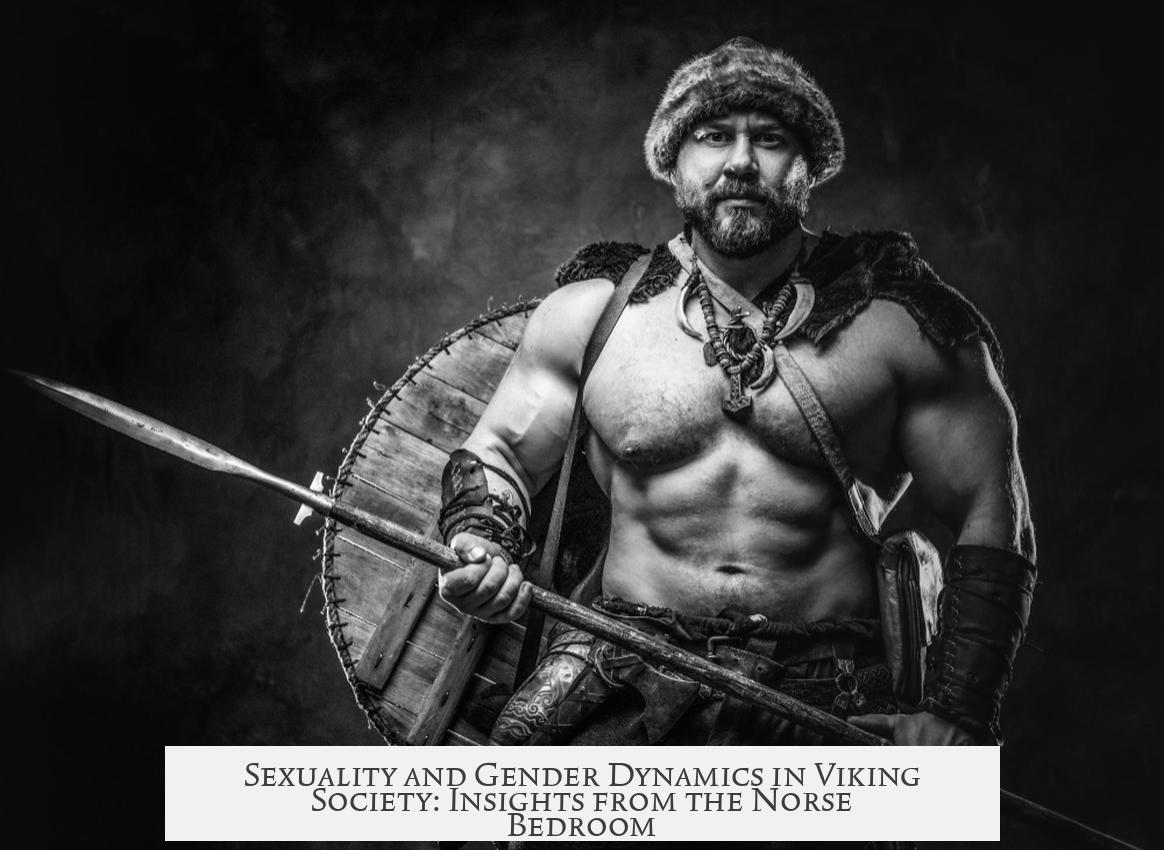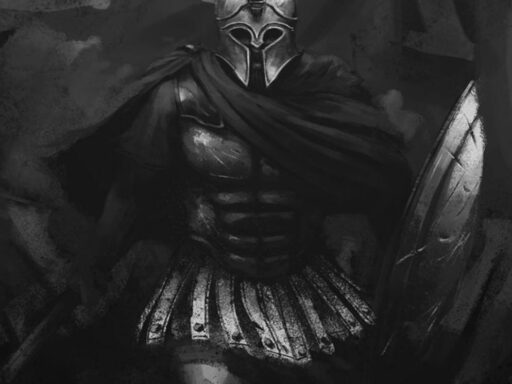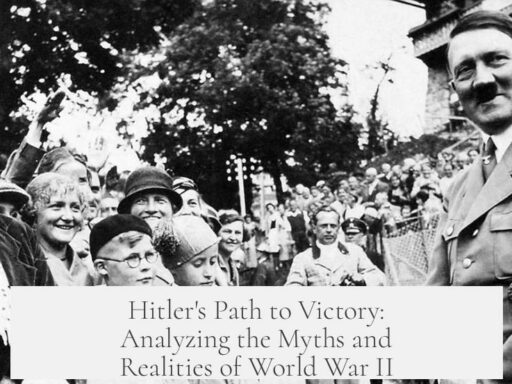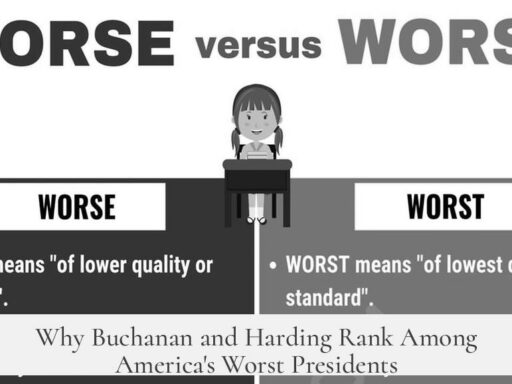Sexuality and sex in Viking times reveal complex social norms, distinctive roles, and attitudes that centered largely on gender, power, and honor. Male homosexual sex focused intensely on active and passive roles. Only the passive partner was considered to have compromised masculinity or to be “gay.” This idea shaped serious social consequences, including the right to challenge slanderous accusations of passivity to a duel to the death.
The stigma against the passive role in homosexual acts came from its association with shame and degradation. Vikings used sexual dominance as a signifier of manliness, with men forced into submissive roles branded with the term blaðr. This word, hard to translate precisely, roughly means “sissy” or “bottom.” Unfairly accusing a man of being blaðr was a grave crime, often punishable by death or exile, and could even spark blood feuds or outlawry.
Sources do not clearly document the frequency or social views on anal sex between men or between men and women. The sagas, laws, and runestones remain silent on this topic. Equally sparse is information about lesbian relationships. Women behaving aggressively or crossing gender lines risked the label hvartr, roughly meaning “butch.” This label often linked to cross-dressing—grounds for divorce—and signaled failure to adhere to strict gender expectations.
Sexual dynamics extended beyond free individuals to thralls, or slaves. Female thralls were valuable but not solely for sexual purposes; they were expected to perform duties beyond sexual servitude. Despite this, sexual enslavement was common in Viking culture, especially under the Swedish Rus trading networks. Female slaves were prized commodities and likely formed a substantial part of Iceland’s early population, partly through Irish sex slaves. In contrast, concubinage included free women besides slaves, and the Norse language sometimes used the same words for concubines and slave women, underscoring fluid social distinctions.
Archaeological evidence for Viking sex toys is absent, making it difficult to confirm their use. Sex in Viking society appears rather pragmatic. Premarital sex among the youth was accepted, but pregnancy carried the expectation for marriage to legitimize offspring and social standing. Failure to marry could reduce a man’s status and, by Viking societal logic, expose him to risks such as rape—sexual passivity equaled diminished manliness.
The age of sexual maturity for girls was typically marked by the onset of menstruation or roughly 12 years old, although marriage before 15 was rare. Both men and women were believed to require orgasm for conception, reflecting the medieval idea that women contributed some form of “seed.” This belief made sexual satisfaction a valid cause for divorce. For example, in Njal’s Saga, a woman named Unn divorces her husband due to his inability to satisfactorily perform sexually, openly discussing this with her father.
An important Viking cultural element related to sexuality was seiðr, a form of feminine magic often involving ritualized sex. While typically practiced by women, men could become practitioners known as seiðrmaðr. However, male practitioners were feared for adopting unmanly traits, termed seiðskratti. The god Óðinn exemplifies this tension, as he practiced seiðr and was accused of “ergi,” a form of unmanliness, because this magic was linked to femininity and passivity.
Vikings discussed sex openly, as attested by multiple sagas. Their close-knit communities allowed little privacy, and sexual matters were public knowledge. Such openness contributed to legal and social regulations about sex, marriage, and gender roles, embedding sexuality deeply within law and honor codes.
| Aspect | Notable Details |
|---|---|
| Male Homosexuality | Passive partner viewed as shameful; accusation led to duels; term blaðr for passive males. |
| Anal Sex | No clear sources or mention in sagas or laws. |
| Lesbianism | Limited info; dominant women labeled hvartr; cross-dressing grounds for divorce. |
| Thralls and Sex | Slaves sexually exploited; female slaves valuable but also workers; free women also concubines. |
| Premarital Sex | Accepted; marriage expected if pregnancy occurred; sexual maturity ~12 years old. |
| Sex and Magic (Seiðr) | Feminine magic involving sex; men risked loss of masculinity practicing it. |
| Social Norms | Sex openly discussed; sexual satisfaction linked to marriage and conception. |
- Viking views on sexuality tied heavily to masculinity, dominance, and social honor.
- Passive male sexual roles were stigmatized, linking to severe social and legal consequences.
- Female sexuality was constrained by roles and gender norms, with aggressive women stigmatized.
- Slavery and concubinage formed integral parts of Viking sexual society.
- Marriage enforced social order post-pregnancy, premarital sex tolerated before reproduction.
- Sex was a public matter in close-knit Viking communities, impacting law and gossip.
- Sexual magic (seiðr) intertwines spirituality with ideas of gender and power.
Sexuality and Sex in Viking Times: A Deep Dive into the Norse Bedroom and Beyond
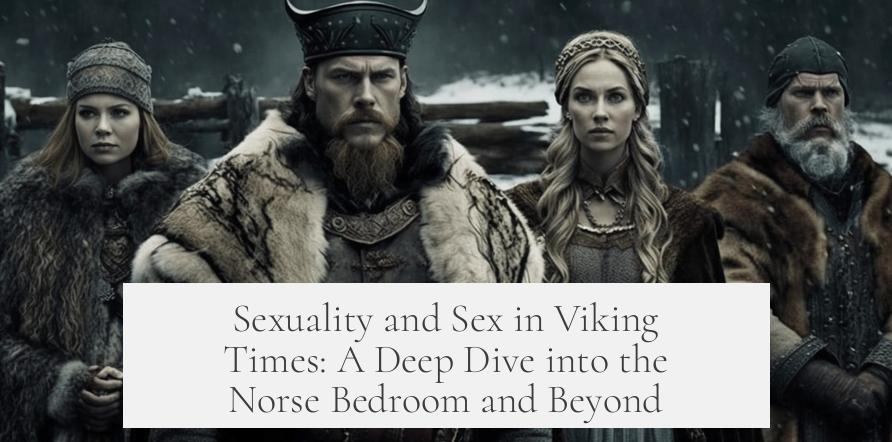
If you’re curious about sexuality and sex in Viking times, brace yourself for a story that shatters modern stereotypes. Vikings weren’t just fierce warriors; they had complex social rules around sex, gender roles, and relationships that reveal a lot about their culture. Surprisingly, sex was openly discussed. Yes, Vikings talked about sex—and not just in hushed tones behind closed doors. It was part of everyday life, right from the sagas down to law codes.
So, what exactly went on behind those longhouse doors? Let’s navigate the intricate, and sometimes eyebrow-raising, aspects of Viking sexuality.
The Viking View on Male Homosexuality: The Passive Partner’s Stigma
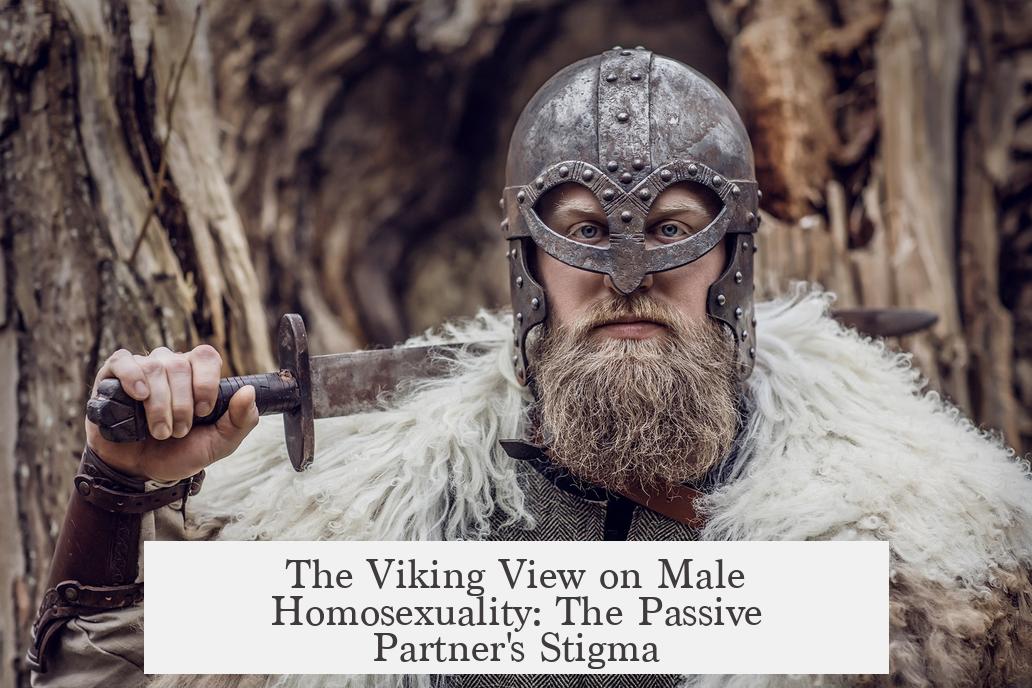
In Viking society, only the passive partner in male homosexual sex was labeled “gay.” The active partner kept his masculine status. Curious, right? It’s like they had a weird binary of “manly” and “not manly,” where being “not manly” was a huge insult.
This wasn’t just idle gossip. Accusing a man of being the passive partner was so serious it could spark a duel to the death. Both Swedish medieval laws and Icelandic laws backed this. Imagine an insult so powerful it leads to a life-or-death challenge.
The passive partner, whether through willing acts or rape, faced deep shame. The Vikings used this as a way to degrade men they wanted to humiliate.
The term blaðr crops up here. It roughly translates to “sissy” or “bottom,” but no dictionary can capture the sting it carried. Men branded blaðr faced social scorn, and falsely calling someone that was another grave offense, sometimes leading to death or even a blood feud. Talk about knowing the power of words!
Sex Between Men and Women: The Murky Territory of Anal Sex
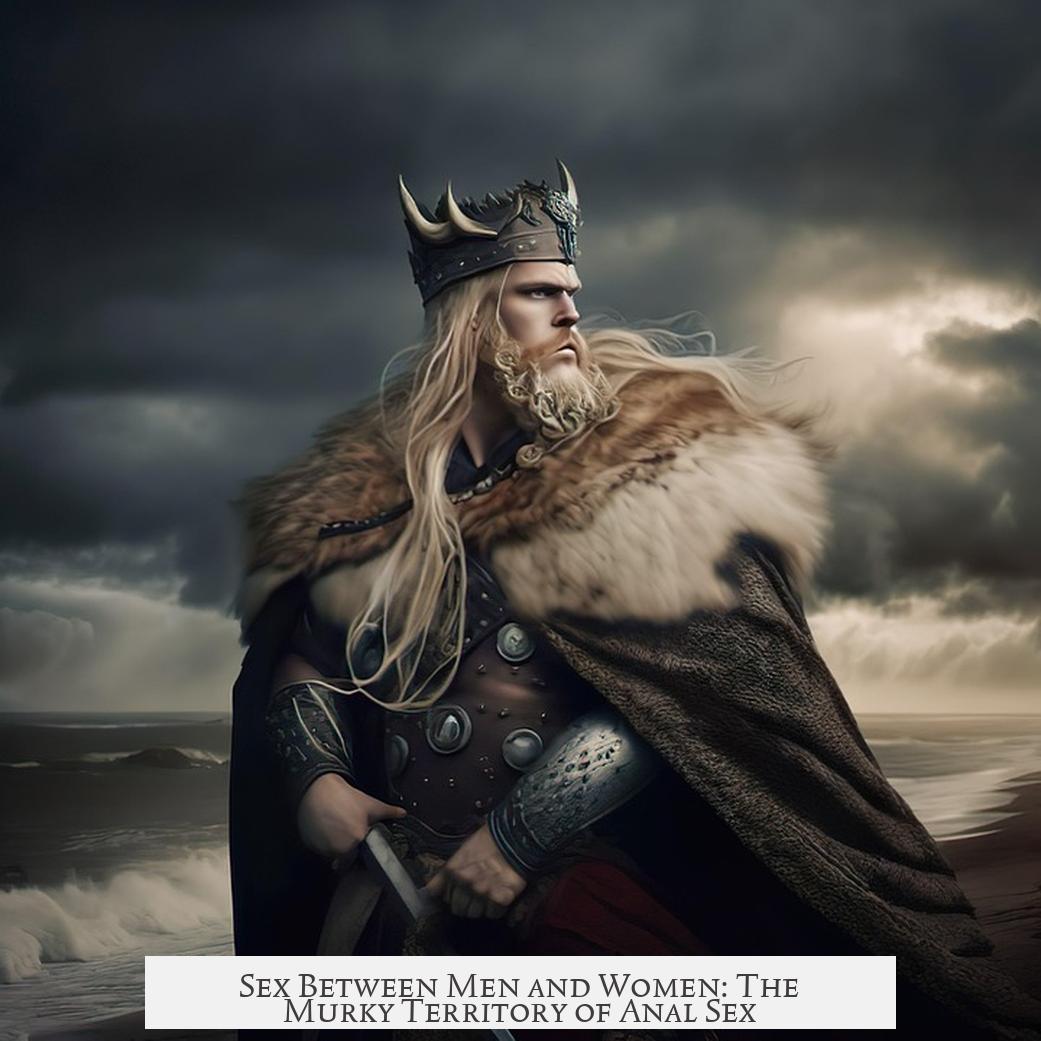
When it comes to anal sex, sources remain frustratingly silent. The sagas, laws, and even runestones don’t mention it. We just don’t know how common or taboo it was. This silence leaves room for speculation, but scholars hit a wall of no evidence. Maybe Vikings kept those preferences more private—or maybe it just wasn’t noteworthy enough for official record.
Lesbian Relationships and ‘Hvartr’: The Aggressive Women’s Label
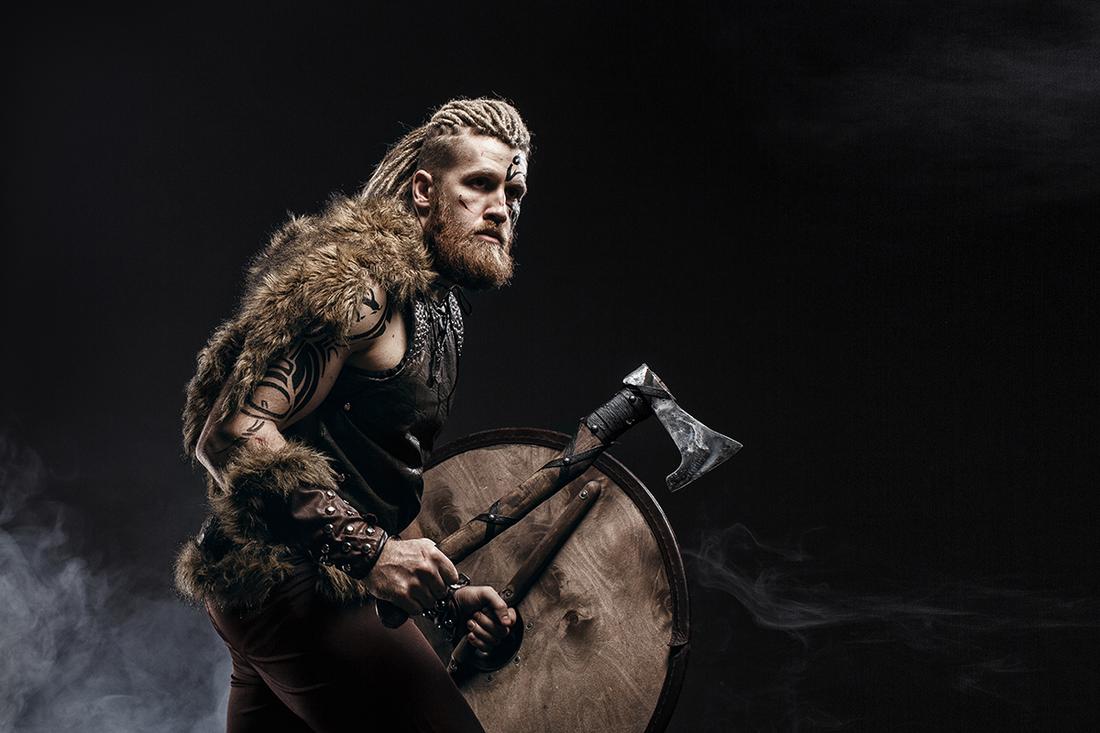
Lesbian relationships remain something of a mystery. The sagas don’t share much about women’s same-sex relationships. However, “hvartr,” meaning butch or overly aggressive women, appears in records. Cross-dressing could land a woman this label and was grounds for divorce! This suggests strict expectations on gender roles.
In Viking eyes, the ideal gender spectrum had set roles: men were to be strong and assertive, women more passive and supportive. Deviations like blaðr for men and hvartr for women indicated a failure to conform, provoking harsh social judgment.
Thralls, Sex, and the Economics of Enslavement

Let’s talk thralls—Viking slaves. Female thralls were not just “walking sex toys.” They were expensive property and handled vital chores. So, while powerful men might have sex with female thralls, these women were too valuable to be purely sex slaves.
Nevertheless, sexual enslavement was widespread. The Swedish Rus, Vikings in the Volga River area, notoriously traded in sex slaves—especially women. The speculation that Iceland’s early population comprised many Irish sex slaves — mixed into Norse settlers — adds another layer to the complex population makeup.
Interestingly, the Norse words for concubine and slave woman often overlapped. Free women could live as concubines with high-ranking men, blurring the lines between consensual relationships and economic status.
No Viking Archaeology for Sex Toys? Nope.
Sex toys? Archaeology hasn’t found any Viking examples. We can only assume Vikings kept it simple or relied on each other. Or maybe wooden toys disintegrated—you’ll forgive us for hoping the truth isn’t *that* boring.
Premarital Sex and Marriage Customs
Sex wasn’t a taboo before marriage. Vikings generally accepted premarital sex, with one big condition: if a girl got pregnant, marriage was expected. No shotgun weddings with muskets here—more like social contracts to legitimize offspring.
Failing to marry the pregnant woman could lead to brutal social consequences. Not just being “less than a man,” but consider this: society might even view you as fit for rape. Brutal? Absolutely. But it reflects how tightly sex, honor, and masculinity were linked.
Age of sexual maturity was around 12 or the first menstruation—with marriage usually happening after age 15 to 20. It wasn’t common to marry younger girls, despite the legal minimums, showing some practical restraint.
Seiðr: Magic, Sex, and Masculinity in Viking Culture
A fascinating curveball: seiðr was a type of feminine magic involving ritual sex. Men could practice it too, but that was risky for their reputations. Practitioners who took on receptive roles in a homosexual context were called seiðskratti, a name loaded with unmanliness and fear.
Even Odin, the king of gods, wasn’t immune. Because he learned seiðr from the goddess Freyja, he was accused of becoming unmanly or “ergi.” So, practicing this magic risked one’s social standing and power—fascinating intersection of sex, magic, and gender norms!
Sexual Openness in Viking Sagas: Explicit, Practical, and Honest
Surprisingly, sex popped up multiple times in Viking sagas. These stories didn’t shy from explicit discussions about sexual compatibility, pleasure, and even divorce due to poor sex.
Highlight: In Njal’s Saga, a woman named Unn divorces her husband because his penis is so large their attempts at satisfying sex fail. She speaks candidly about this to her lawyer father. That’s some brutally honest matchmaking!
Sex was also central for marriage legitimacy. Vikings believed both partners needed to orgasm to conceive, reinforcing the idea that women weren’t “imperfect men” but essential contributors providing “seed.”
Privacy? Forget it. Viking villages were tight-knit communities where everyone knew everyone’s business. Sex talk, scandals, and stories traveled fast.
What Can We Learn From Viking Sexuality Today?
- Sexual roles tied to masculinity and shame shaped Viking attitudes profoundly.
- Open discussion about sex existed, but social rules were strictly enforced—for better or worse.
- Slavery and concubinage intertwined with sex, reflecting economic and social structures.
- Magic and sexuality overlapped, influencing how gender and power were viewed.
- Legal systems took sexual accusations seriously, with deadly consequences.
So, next time you picture a Viking, instead of only thinking about battle axes and helmets, remember that their views on sex, gender, and relationships were surprisingly complex and layered. They were human beings navigating a world where sex was open, politics and power mingled under the covers, and failing to toe the line had serious consequences. Intriguing and raw, just like the sagas themselves!
